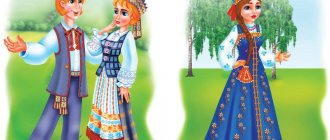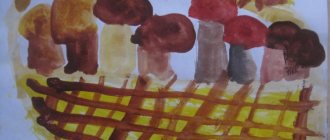Natasha / analysis of the walk
ANALYSIS
carrying out a walk
Properly organized and thoughtful walks help to achieve the goals of the comprehensive development of children. Approximately up to four hours a day are allocated for children to spend time in the fresh air. The daily routine of preschool groups includes a daytime walk after classes and an evening walk.
For walks, there is an area on the territory of preschool groups for organizing a variety of activities for children. The area is landscaped, equipped in accordance with pedagogical and hygienic requirements. Each mixed-age group has a separate area where places are allocated for outdoor games and the development of children’s movements (a flat area for playing with sand, water, building materials, for creative games and games with various toys.
The site has equipment for the development of movements: climbing fences (triangular, tetrahedral and hexagonal, a balance beam, a slide, equipment for jumping and throwing exercises. In addition to permanent equipment, toys and aids are brought to the site in accordance with the planned work plan . The playgrounds end with paths along which children can ride bicycles and cars. In addition to playgrounds, there are closed gazebos on the site for protection from rain and sun. In winter, slides, ice paths and snow structures are installed on the site together with parents.
To ensure that children are willing to go for a walk, the teacher thinks through the contents of the walk in advance and arouses the children’s interest in it with the help of toys or a story about what they will be doing. It turned out that when walks are meaningful and interesting, children go for walks more willingly.
The teacher organizes the dressing of children so as not to waste a lot of time and so that they do not have to wait for each other for a long time. For this purpose, each group has a dressing room with individual lockers and a sufficient number of banquettes and chairs. The teacher and junior teacher teach children to dress and undress independently and in a certain sequence. When returning from a walk, undress in the reverse order. In a mixed-age group, children are accustomed to helping each other and remembering to say thank you. When most of the children are dressed, the teacher goes out with them to the site. The other children are monitored by a junior teacher and then escorted to the teacher. When going for a walk, children themselves bring out toys and materials for games and outdoor activities.
The leading place during the walk is given to games, especially active ones. The teacher conducts an outdoor game at the beginning of the walk or at the end of it.
On cold days, the walk begins with games of greater mobility associated with running, throwing, and jumping. During walks, the teacher uses plotless folk games with objects, such as grandmothers, ring throws, and skittles. In addition to outdoor games and individual exercises in basic movements, sports entertainment is also organized during the walk. Children really enjoy sledding, ice-skating, and skiing.
During the walk, the teacher pays attention to the children’s work activities. Children help shovel snow, clear paths, and make various structures out of snow.
Labor tasks are feasible for children and at the same time require some effort from them. The teacher always makes sure that they do their work well and finish what they started.
A large part of the walks is devoted to observations (pre-planned) of natural phenomena and social life. Observations were carried out with a whole group of children, with subgroups, and also individually. The teacher attracts some to observations in order to develop attention, others arouse interest in nature or social phenomena, etc. The surrounding life and nature provide an opportunity for organizing interesting and varied observations. The teacher pays attention to the clouds, their shape, color, and compares them with images known to the children. During the walk, the teacher makes sure that all the children are busy, do not get bored, and that no one gets cold. It attracts those children who run a lot to participate in quieter games.
About half an hour before the end of the walk, the teacher organizes quiet games. Then the children collect toys and equipment. Before entering the room, they wipe their feet. Children undress quietly, without noise, carefully fold and put things in lockers. They put on slippers, put their suit and hair in order and go to the group
Progress of the walk
Introductory part
Educator: Guys, come closer to me. I’ll tell you a riddle:
If the leaves on the trees have turned yellow,
If the birds flew to a distant land,
If the sky is gloomy, if it rains,
What is this time of year called? ( autumn )
Educator: Yes, it's autumn . Who will tell a poem about autumn . (children recite familiar poems)
the autumn months in order .
Guys, what signs of autumn do you know?
Sample answers from children: It has become cold, the leaves turn yellow and fall, it rains often, there are frosts in the mornings, the days are getting shorter, the nights are longer, insects and animals are preparing for winter.
Second part
Educator: Yes, autumn is the time of year when all nature changes. The days are getting shorter, the sun is not warming up, it is getting colder day by day, and it rains often. By the end of autumn there will be frosts . Migratory birds fly south, wintering birds move closer to people.
Educator: Guys, what do you think the weather is like today? (gloomy, cloudy, windless)
Why?
(the sun is not visible, the sky is gray, the sky is cloudy, there is no wind)
.
Let's take a breath of autumn air .
Breathing exercise “Smells of nature”
Educator: What smells did you smell? (rotted leaves, spicy grass, mushrooms, smoke)
Frontal observation “What did the trees on the site look like?”
1. Examining trees and shrubs up close and from afar .
2. Children admiring the beauty of trees.
Educator: Guys, look at the multi-colored carpet that covers the ground. What kind of carpet is this? ( Autumn Fallen Leaves )
Let's take the leaves in our hands, what do they feel like?
(dry, rough, rustling)
How do the leaves rustle?
(sh-sh-sh-sh-sh)
Educator: Let's imagine that we are autumn leaves . Let's show how they fall to the ground (children perform voluntary movements)
Low mobility game “ Autumn Leaves”
leaves are quietly spinning ,
The leaves fall quietly under our feet.
And they rustle and rustle underfoot,
As if they want to get dizzy again.
Educator: Yes, in the fall you can often see leaves falling, what is this phenomenon called? (leaf fall)
There were a lot of leaf attacks on our site. Let's see what trees they come from.
Didactic game “Which tree is the leaf from?”
Search tasks.
1. Choose the most beautiful tree for you.
2. Find the reddest (yellow)
tree.
3. Find a leaf that fell today, yesterday, long ago. Tell us how they differ?
Educator: What else grows on our site? ( shrubs )
What is the difference between
a shrub and a tree ? (many thin trunks, low, small leaves, some berries)
Speech exercises.
Game “Say beautiful words about
autumn ” (Goal: be able to select adjectives for a given word)
.
The teacher notices feeders on the veranda.
Educator: What is this, guys? (feeders)
What are they needed for? (for feeding birds)
What can you feed the birds? (seeds, pieces of bread, grains)
Why do some birds fly south with the onset of cold weather? (it became cold, there were no insects, there was little food for birds)
What are these birds called? (migratory)
What are the names of those birds that stay with us for the winter? (wintering)
Educator: Guys, let's turn into birds and play a game.
The third part
Outdoor game: “Migration of birds”
Tasks:
Strengthen the health of players.
Promote their proper physical development.
Promote the acquisition of vital motor skills.
Perform game actions in accordance with the text.
Develop the ability to move in different directions without bumping into each other.
Develop orientation in space.
Cultivate endurance and patience.




